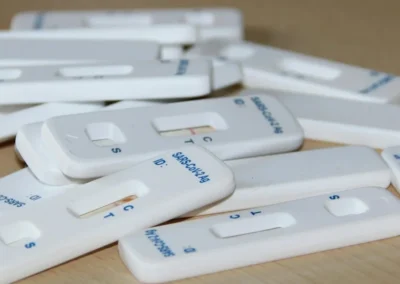New research led by Steven Schofield (UCL, LCN, Department of Physics & Astronomy, CMMP), in collaboration with Michael Flatté (University of Iowa / Eindhoven University of Technology), has achieved a major milestone in semiconductor research: the first atomic-resolution images of hydrogenic acceptor wave functions in silicon.
Using scanning tunnelling microscopy (STM), the team visualised striking square-ring-like features that arise from near-surface defects introduced by high-energy bismuth implantation into silicon (001) wafers. These patterns reflect the anisotropic shape of the ground-state wave function and confirm the formation of a p-type surface, with their symmetry linked to the degeneracy of silicon’s light- and heavy-hole bands.
The observations were supported by effective-mass and tight-binding calculations, which reproduced the experimental features and established a direct connection between wave function shape, energy, and the underlying band structure. This strong alignment between theory and experiment marks a crucial step toward engineering large-scale dopant-based quantum devices.
The collaboration was initiated during Michael Flatté’s sabbatical at UCL, underscoring the importance of international research visits in fostering long-term partnerships and enabling transformative discoveries.
Links:


